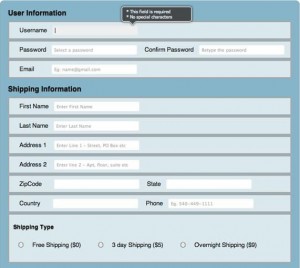Building trust starts with the first web visit and with the first impression of your brand.
Such is the idea behind “2.0” thinking. Products, services and brands now have “online,” “interactive,” and “collaborative” elements so that consumers and users play an active, anonymous and early role in creating relationships with vendors. Twitter, Facebook and Wikipedia are halmarks of Web 2.0 success.
 In the olden-days of Handshake 1.0, a handshake was a precursor of bilateral communication. A protocol of acknowledging a peaceful relationship and mutual trust with the idea of building upon the status quo. An initial meeting between a vendor and a prospective customer. A politician building a coalition. A suitor wooing a debutante. Two or more people carve out a sacred space for a live interaction in the hopes of a mutually satisfactory outcome. Stakes are reasonably low with a first handshake; and the budding relationship can quickly go in any direction. Compare this to two people who pass in the street with nothing more than a glance. No rapport. No communication. No goals for advancing an agenda.
In the olden-days of Handshake 1.0, a handshake was a precursor of bilateral communication. A protocol of acknowledging a peaceful relationship and mutual trust with the idea of building upon the status quo. An initial meeting between a vendor and a prospective customer. A politician building a coalition. A suitor wooing a debutante. Two or more people carve out a sacred space for a live interaction in the hopes of a mutually satisfactory outcome. Stakes are reasonably low with a first handshake; and the budding relationship can quickly go in any direction. Compare this to two people who pass in the street with nothing more than a glance. No rapport. No communication. No goals for advancing an agenda.
The Internet meets Humanity: Handshake 2.0
With that introduction, I’d like to introduce the new concept of—taa daa—Handshake 2.0. As we have more and more interactions online (defined and measured through web visits, cookies and registration forms) there is a new process for establishing bilateral communication. No outreached hand. No touch. No real-time conversation. No progress or even an action plan. Just a web site that seeks rapport and a visitor who is willing to offer personally identifiable information. It’s easy for users to navigate away. But it’s also human to hope that each visited site succeeds at fulfilling the information hunt.
 What is interesting is what happens next: a fast exit or an attempt at rapport building. Credibility and effective design by the site owner conspires with desire and perhaps laziness by the visitor to earn a second and a third click.
What is interesting is what happens next: a fast exit or an attempt at rapport building. Credibility and effective design by the site owner conspires with desire and perhaps laziness by the visitor to earn a second and a third click.
Like with off-line interactions, there are false-starts and bad first impressions in the online world.
At this point the the user (and laser-focused vendors) chooses whether s/he will try to extend the anonymous glance into rapport and ultimately into a Handshake 2.0. This is so very different than the past. Information collection required numerous human interactions. Now, anonymous web surfers can learn and make some initial decisions without consulting another human. Likewise, the human managers of web sites can look at analytics reports, IP addresses and email domains to determine if the prospect warrants attention.
Creating The Conditions for Handshake 2.0
I argue that earning a Handshake 2.0 is the first job of a web site in the Web 2.0 era. It may not happen on the first day you launch a web site. And the web presence frequently need to be forged with the help of outside forces…reputation, brand, economic forces and individual behavior. So what attracts (and alternatively repulses) visitors from choosing to grant a Handshake 2.0:
| Earning a Handshake 2.0 | Raising Doubts |
|---|---|
|
|
Following the principles above will result in more and faster Handshake 2.0s. Supplementing your web site with other rapport-building tactics makes sense too. This is why marketers are looking for any and every way to build relationships. Facebook, Twitter, MeetUps are the new tools which have earned a place beside reliable standards: press releases, trade shows, advertising and good ole salesmanship.
Did this article make you think? Leave a comment!